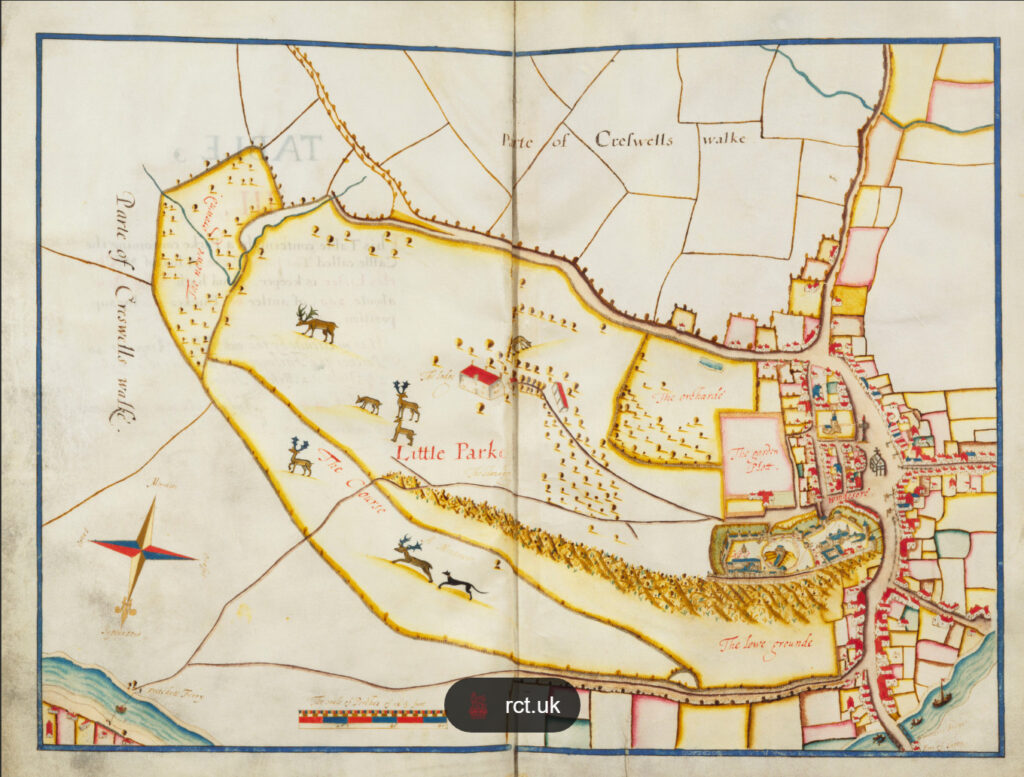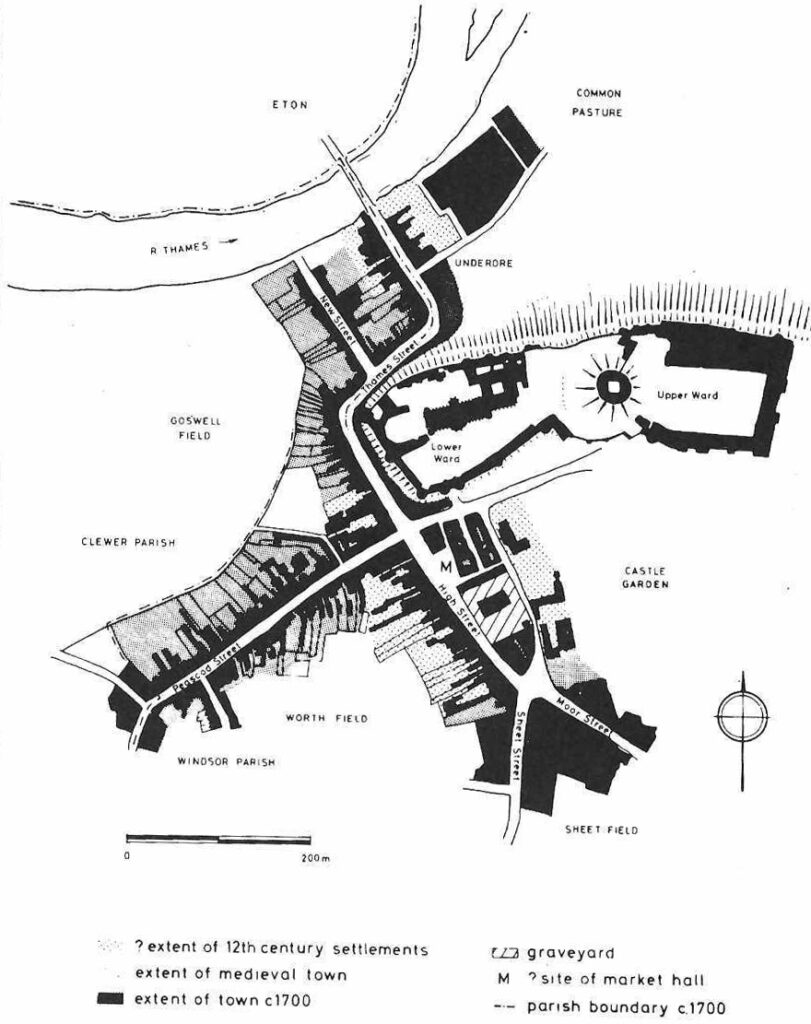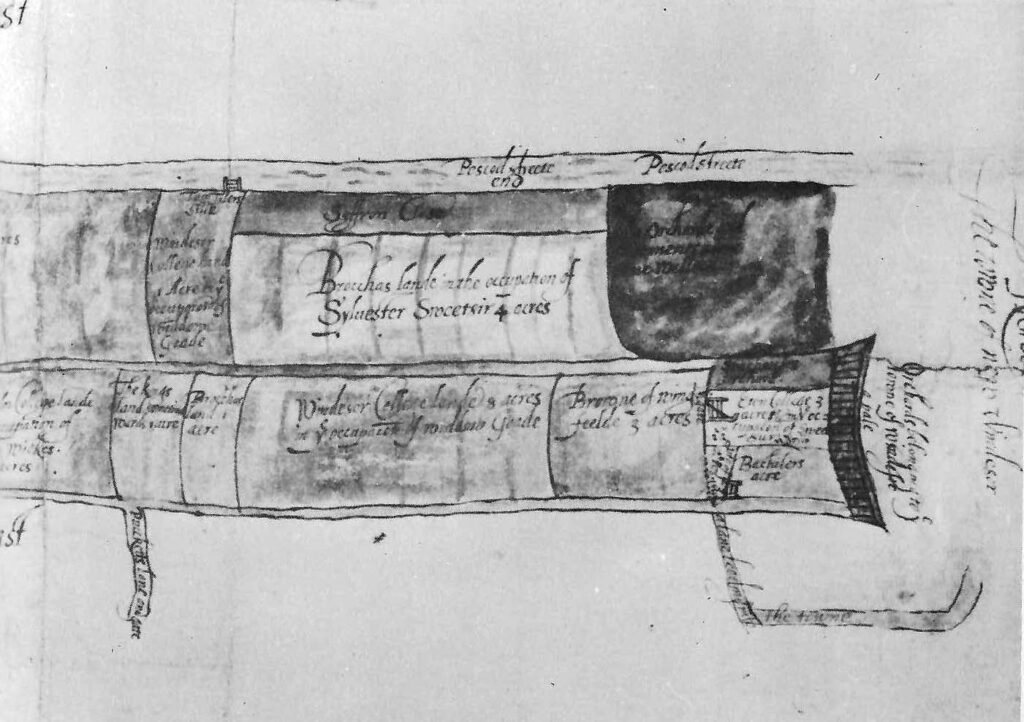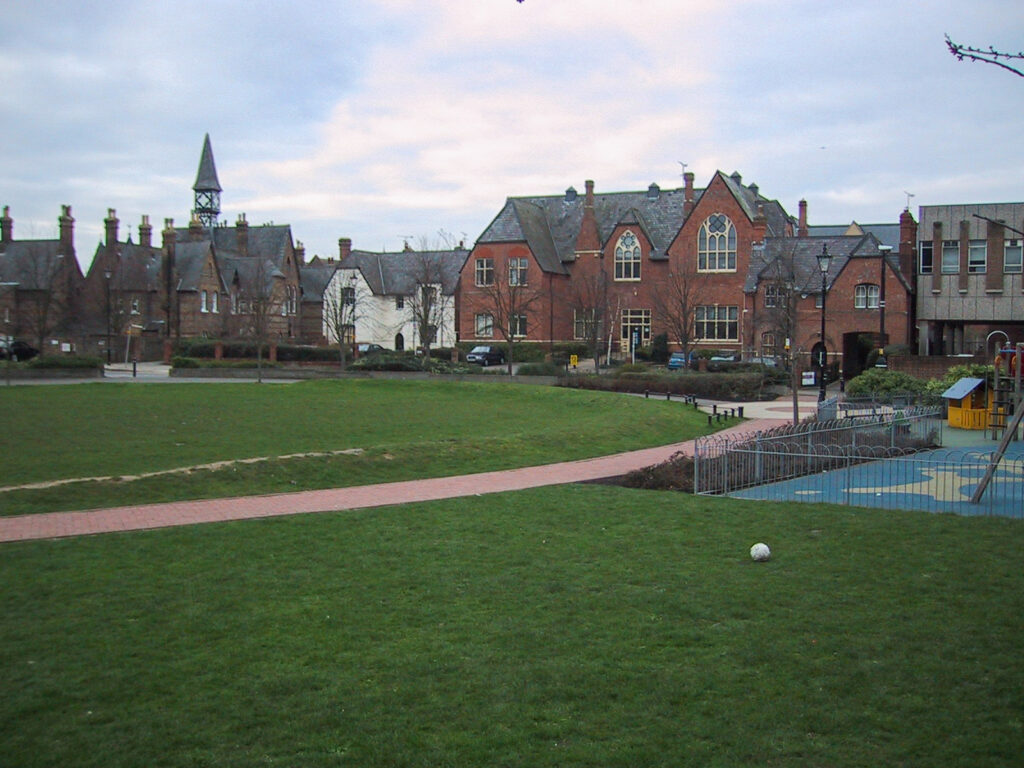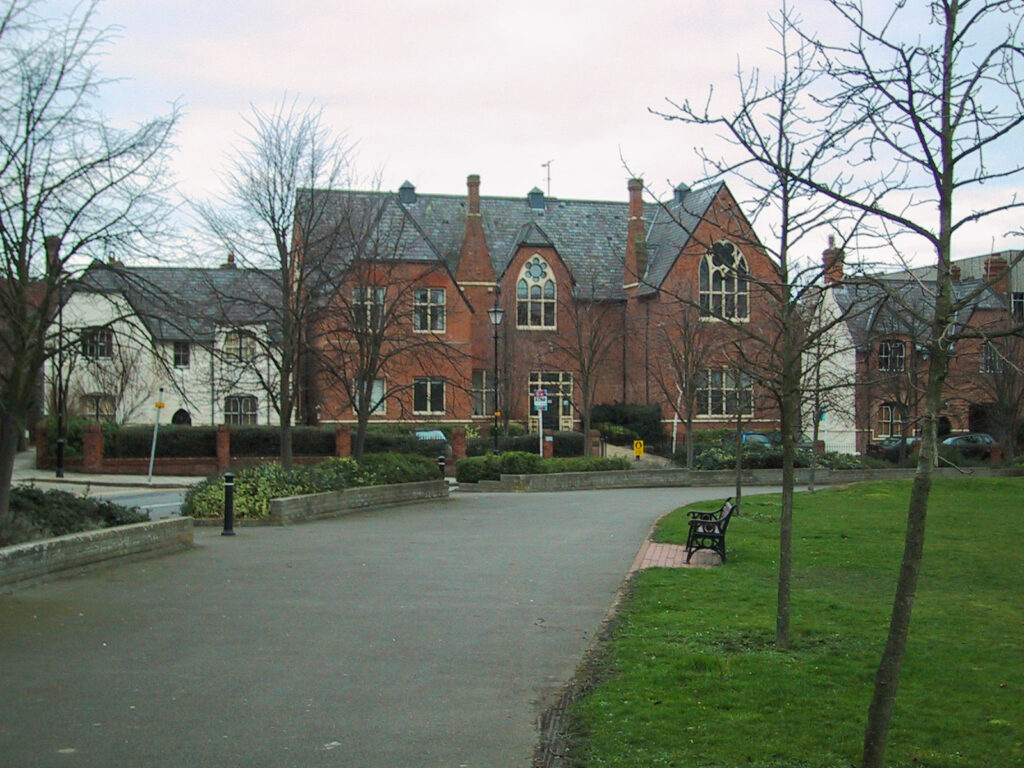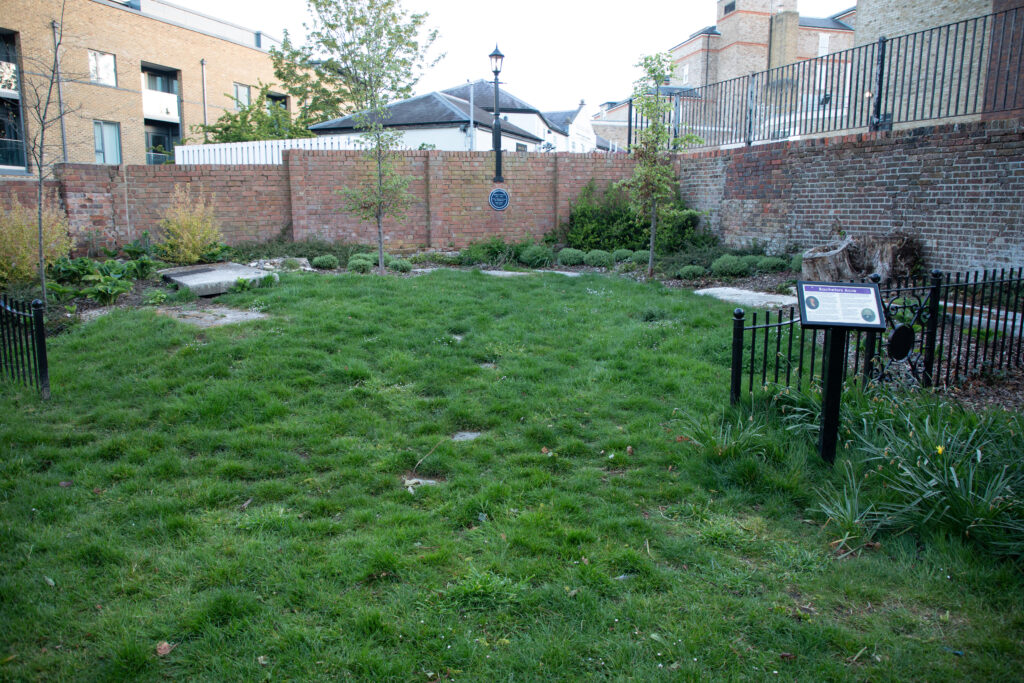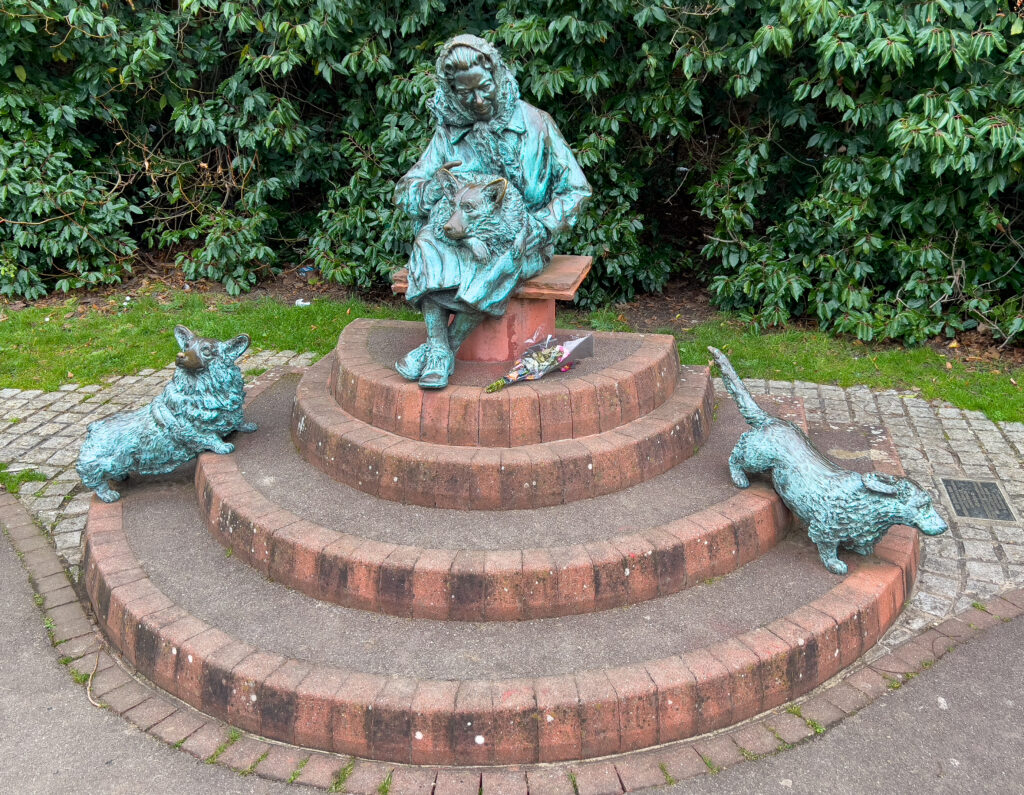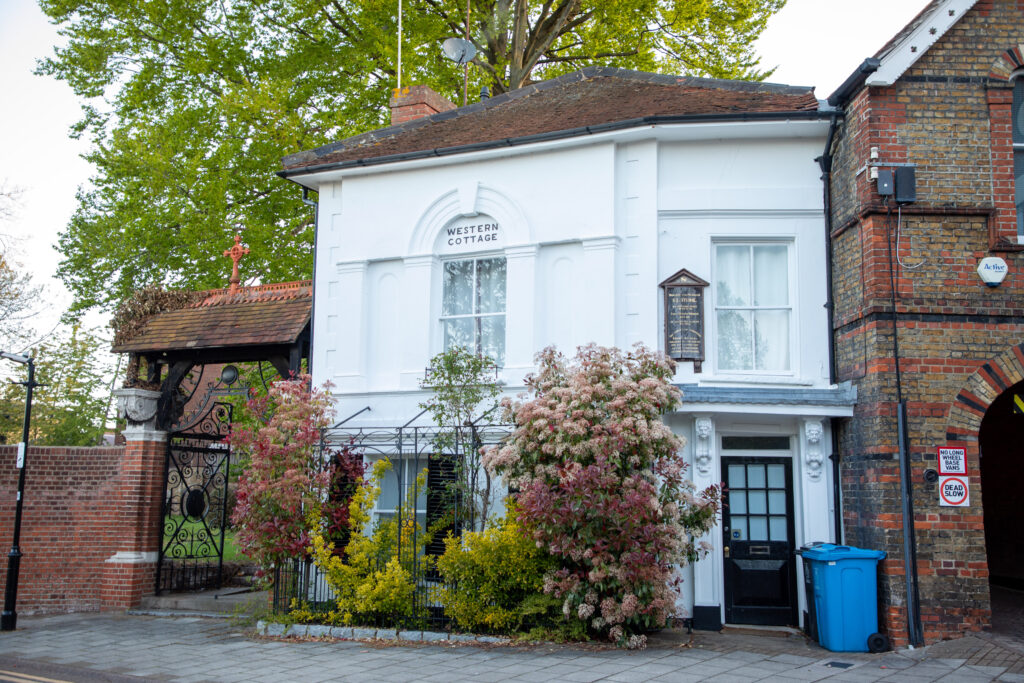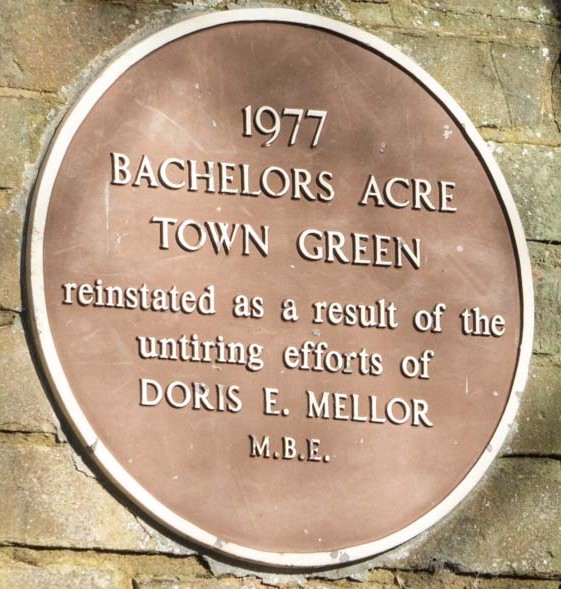The History of Bachelors Acre
In 1607 John Norden, a cartographer, made for James I a survey of “The Honour of Windsor” which included a bird’s-eye view of the town. Norden clearly marks 7 enclosures around the Worth Field. This in part is the location of Bachelors Acre.
New Windsor had an open field system by which inhabitants owned individual strips scattered in large open fields. The three main fields, for the growth of oats or wheat were “Worth, High and Spelters” these are marked on Dr Astill’s diagram.
“The Highe Way from Spittle to Windesor” A plan dated 1615 located in The Archives of St Georges Chapel, shows Bachelors Acre and is the earliest known reference.
Miss Doris Mellor researched the history of Batchelors Acre to support her 1969 claim that it should be a Town Green. She found that ‘Batchelors Acre‘ was referred to by name in a lease of 1629. “The Provost of Our Blessed Lady of Eaton in Windsor leased to John Fishbourne of New Windsor three acres of arable land in a field called The Worth, adjoining at one side to pitts called Batchelors Acre.”
The constitution of the Batchelors of Windsor is difficult to define.
There is proof positive that in mediaeval times it was the meadow where young men practised with their bows and arrows. A pair of butts was set up there. They shot at the targets. The word “bachelor” was in those days used to describe “A young knight who followed the banner of another, a novice in arms.” That is the first meaning in the Shorter Oxford English Dictionary, 3rd ed. (1944), p. 134. Later on, when the long bow went out of use, the young men practised with their muskets. That appears from a deed made in the year 1651. The corporation of New Windsor let Bachelors’ Acre to one Richard Hale for 40 years for use as pasture. In the deed they stipulated that he was to “make and set up … one sufficient pair of butts for the inhabitants of the said town to shoot at” and that he was not to make “any fence or enclosure” there nor to do “any act or thing that shall or may be any let or hindrance of shooting or any other lawful exercise for recreation of the people.” A later lease of 1704 shows that by that time the butts had disappeared: but nevertheless the corporation stipulated that “all . . . persons” should have access to the ground “to use and exercise any lawful pastime for their recreation at all convenient times.” After another 50 years, in 1749, there was a new lease to William Tyrrell of the Inner Temple. which contains the same stipulations. The words “the people” and “all . . . persons” in those deeds clearly meant the inhabitants of New Windsor.
In 1702 Western Cottage, overlooking Bachelors Acre was built for Queen Anne’s secretary.
A corporation lease of 1761 granted to Christopher Lofft “all that piece or parcel of ground called or known by the name of Bachelors Acre lying and being in the parish of New Windsor where Butts formerly stood.” The lease was for forty years, at an annual rent of 3/4d.
Such was the position down to the year 1789. But then it seems that Bachelors’ Acre was much neglected. The occupiers of houses made drains into it. which flooded it. All and sundry threw dung and rubbish on to it. It became such an eyesore that in 1809 a group of the inhabitants banded together to improve it. They called themselves the Bachelors of Windsor. This did not mean that they were all unmarried men. It was only a name to denote a group of public spirited inhabitants, married and single. young and old, determined to assert their rights. They removed every encroachment. They filled up a large pond. They raised the ground and levelled it. They turfed it afresh. Many lent their horses and waggons to fetch turf from different places. When they had finished their work. they had a great celebration there to mark the jubilee of King George Ill. Queen Charlotte joined in. They roasted an ox and had plum pudding. They put up a big obelisk 17 feet high, which is still there. On the side there are the words:
“1810
Alterations and Improvements
were made by
The Bachelors of Windsor
in this their Acre”
1809 George III’s Bachelors Jubilee celebrations, ox-roasting
1810 (May) Obelisk erected to commemorate the Jubilee.
In the summer of 1810 a grand match of cricket was played on the acre across which a few months before it was impossible to walk.
In 1814 the “Natives and Bachelors” successfully opposed a proposed enclosure, and at a celebration at the Swan Inn in 1817 the chairman expressed the hope that the obelisk would remain “the bulwark of the rights of the Bachelors of Windsor even when the all-powerful hand of time shall have crumbled more magnificent structures into dust.”
In 1819, when the land was leased to a local butcher, called William Perryman, the rent had increased to £9 a year. This lease specifically mentioned “the right, freedom and privileges of the Native Bachelors of Windsor of exercising all lawful sports and pastimes upon the said pasture ground at all times during the term.”
1817 – 1855 “Maids to run for a Gown, Jump in Sacks for a small frock, Bachelors to eat rolls and Treacle for a good hat, Grinning through horse collars for a fine Irish shirt, etc.
In 1818 a committee was appointed to consider the rebuilding of the Parish Church, there was also the need to extend the burial ground, so a piece of land was bought, behind the houses opposite, and adjoining the Batchelors’ Acre, part of the garden of Mr. John Hatch.
Mr Knights guide had no doubts about the status of the Bachelors’ Acre. It had long been appropriated by prescriptive right, and more recently by the award of the Commissioner of Forest Enclosure, to the use of the commonalty of Windsor for their amusements.
In 1832 the Dispensary received a legacy of £500 from the estate of Mary, Countess Harcourt and at its Annual General Meeting in January 1833 a Building Committee was formed, A piece of land which lay at the apex of a triangle formed by New Road (now Victoria Street) and Bachelors’ Acre was bought for £150. The Windsor Savings Bank bought the adjoining site, and a uniform design for the two buildings was agreed. Mr Bedborough’s tender was accepted and the work completed in July 1844.
In 1847, there was the “Battle of Bachelors’ Acre.” The local authorities sent four men to dig a well in Bachelors’ Acre so as to supply water to the streets. Several hundred people thought that this was an invasion of their rights. They came with spades and shovels to fill up the well. The police went to stop them. But they threw volleys of clay and turf at the police, who had to withdraw. The people filled up the well and put up a flag over the spot. They celebrated their triumph with a bonfire and fireworks. Later the town council passed a resolution that there should be an agreed site for the well “so as not to interfere with the enjoyment of the same by the inhabitants.”
1861 29th September land was purchased for £500 and conveyed to the trustees to build a new school on Maids’ Acre, adjoining Bachelor’s Acre. Building started immediately the builders Fassnidge & Son from Uxbridge wrote in a letter on 3 December 1861 “Progressing as fast as weather will allow”
1862 New building completed.
During the period 1863-1870 Western Cottage was occupied by S.J. Stone the Curate at the Parish Church. He was a well known Hymn writer and during his time at the cottage wrote the hymn “The Church’s one Foundation”. Alfred Young Nutt MVO, ISO, Architect, Crown Surveyor and Artist lodged with the Reverend S.J. Stone at Western Cottage when he first came to Windsor.
In 1875 there was another incident. The people proposed to hold sports on the Acre. The mayor and corporation said it was their property, and threatened to take steps to stop the sports. The town clerk advised the corporation that when the inclosure took place in 1817, the whole of the land in the Acre became the property of the corporation, and that the corporation had it as free as any other property. But the mayor and town clerk did not have their way. The local newspaper says that the people “acting upon the conviction that the corporation had no right to interfere with them they held their sports . . .”
From that time onwards the corporation laid claim to the land as if it was their own property without any right in the inhabitants to play games there. So much so that in 1903 the town council proposed to sell part of Bachelors’ Acre to the local infirmary. The Local Government Board sent an inspector to hold an inquiry. He took evidence which showed that the inhabitants still claimed the use of the land. Thereupon the Local Government Board refused to approve the sale because the building would be incompatible with the use by the inhabitants. After this inquiry, big improvements were made making the Acre into a sports ground.
The corporation, however, still refused to recognise any right in the inhabitants to use the land for recreation. The corporation covered the Acre with tarmac and turned half of it into a car park, and have allowed the Royal Free School to use the other half as a playground. In 1968 they actually proposed to put up a multi-storey car park. But planning permission was not granted. One of the reasons was because of the claim of right by the inhabitants to use it for recreation.
On November 24 1967, Miss Doris Evelyn Mellor, a lady living in Windsor, applied to register the piece of land called Bachelors’ Acre. She applied to the Berkshire County Council because they are the registering authority. . . .The Royal Borough of New Windsor lodged an objection to that registration. It was referred to the Chief Commons Commissioner. He confirmed the registration. The borough appealed to Foster J [1974] 1 WLR 1504
New Windsor Corporation v Mellor [1975] 1 Ch 380, CA
After The Royal Free School relocated to Bourne Avenue the car park and garages were removed and Bachelors Acre was grassed over and made into a pleasant recreational area.
More importantly, because of Miss Mellor’s campaign, supported by the Windsor and Eton Society, it is officially a Town Green, and as such is safe from future development.
Miss Doris Evelyn Mellor M.B.E.
Thamesweb The Old Burial Ground at Maderia Walk, Bachelors Acre
